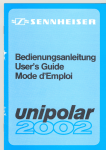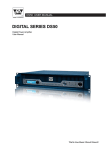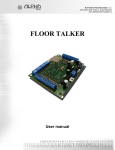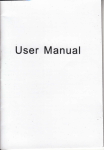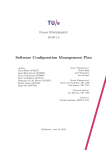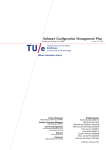Download Pyle PDWM2800 User manual
Transcript
PDWM2800 User Manual This wireless microphone system uses the UHF band. It’s perfect for use on performance stages, assembly halls, and karaoke bars. You can use this product with lapel mics or handheld microphones. Please read this manual carefully for proper operation. Read this before operating your unit: 1. Please read this manual carefully before using. Keep it in a safe place for future reference. 2. Do not expose the unit to rain or an environment where it may be splashed with water. This could result in fire or electric shock. 3. Do not force on switches, knobs, or cords. When moving, first turn off the power. 4. Do not attempt to clean the unit with chemical solvents; this might damage the surface. Use a clean, dry cloth. 5. To prevent receiver damage, please turn off power during electrical storms. 6. The voltage must be the same that is specified on the unit. RECEIVER RECEIVER REMARK A: CD Power Switch @ Audio Volume Control (3) RF&Audio Signal Display ® Antenna ® Mixed Audio Outlet& Separate Outlet <ID DC Power Input B: Q) Power Switch @ Switchorer of R F and Antenna indicator @AudioSignallndicator ® Digita Tube Frequency Display ®Audio Volume <IDAntenna (j) Mixed Audio Outlet& Separate Outlet ® DC input 1. Draw out the antennas and form them in a V shape. 2. Connect one end of the audio cable with the DC input jack of the receiver and the other to the microphone input port of an audio mixer or power amplifier. 3. Connect the AC adaptor to the DC port and then plug into the wall. 4. Press the switch of the receiver to turn on the receiver, and then turn on the power supply. ¢ ¢ ¢ ¢ ¢ ¢ ¢ 1. Open the handheld microphone battery cover and put in two batteries – make sure the polarity is correct. 2. Turn on the power switch of the microphone. The power indicator on the microphone and the RF indicator should light on. 3. When the transmitter is not used, turn off the power. 4. When the low voltage indicator lights, replace the battery. 5. Take out the battery when not using for a long period of time. STANDARD PARTS TROUBLESHOOTING BREAKDOWN REASONS SOLUTION 1. The transmitter does The power indicator is naton 2. not load the battery, and the battery no power or the battery polarity is wrong. The power jack of rece- 1. Load in a new battery 2. Connect receiver's iver is not attached 3. Tum on the power of power power. 3•. oower switch is off 1. the transmitter is 2. iver has not been connected. No voice The distance between 2. Joint the receiver and ioudspeaker together. 3. Tum up the volume receiver or the loudspeaker is too low. 4. the transmitter is far from the receiver. 4. Do not make the 1. 2. enough The voice is distortion 1. Tum on the transmitter 3. the volume of the the receiver and transmitter is not far noitumed on. the AF cord of rece- receiver. Do not draw out the antenna fully. The power of the battery is not enough. bBnsmittar far fNlSy from the receiver. 1. Draw out the antenna fully. 2. Replace a new battery. Replace a new battery. 1. The power of the 1. battery is not enough. 2. Put the loudspeaker 2. The loud speaker is too near to the receiver. far from the receiver. PARAMETER RECEIVER Frequency Range: Sensitivity: Dynamic Range: Signal-to-Noise: Image Rejection: Audio Frequency Response: System Distortion: Audio Output Level: Power supply: Current Consumption: 480-S60Mhz <2UV (12dB SINAD) >80dB >80dB >60dB 80-12S00HZ <1% 700mV(600D) DC12V-17V/600MA < 400mA TRANSMITTER Maximum Deviation Range: Frequency Stability: RF Output Power: RF Rejection: Current Consumption: Operate Range: Battery: PYLE MISCELLANEOUS PARTS SO KHz (Max) ±O.OOS% <40mW >40dB <100mA 60-80M 1.SVX2 AA MISC ACCESSORIES









